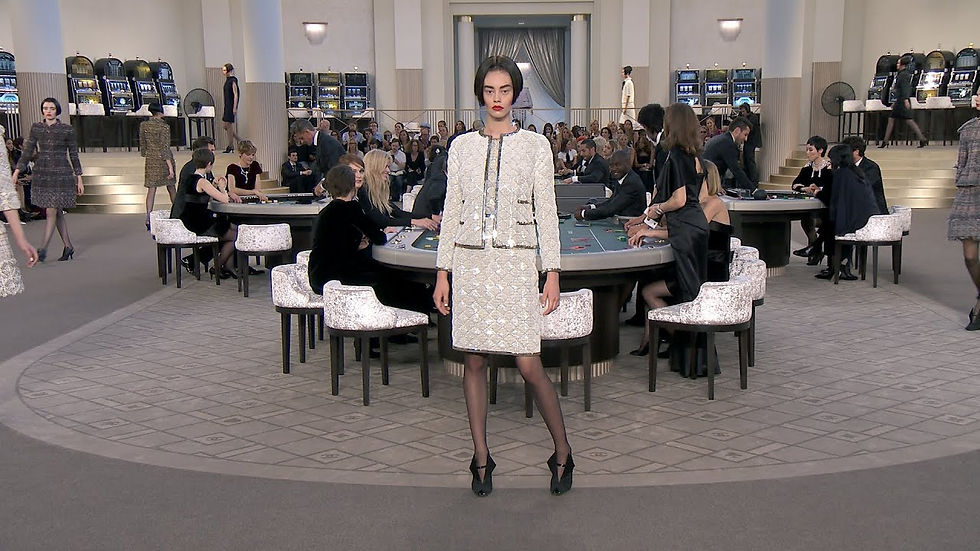Knowing Fashion History: Where Did The Cocktail Dress Originate?
- Redazione

- 6 lug 2019
- Tempo di lettura: 3 min
Aggiornamento: 10 lug 2019
Today, a cocktail dress is a frock suitable for semi-formal or formal situations. Some examples are the pieces from CUSHNIE’s ready-to-wear line featured in the fall 2019 NYFW. It's typically
knee-length, give or take a few inches from the hemline, but unlike a free-flowing summer dress,
it usually exudes elegance with a sort of simplicity.

The story of how the cocktail dress came to be is fascinating, and, maybe surprisingly, is grounded somewhat in feminism.
In the early 1920s, there was a nationwide ban on alcoholic beverages in the U.S. Ultimately, due to corruption and widespread disregard for the law, the prohibition proved to be unsuccessful.
Law-skirting speakeasies began to open up, and Americans found various ways to consume alcohol without punishment. Before that time (which is to say before universal prohibition), women weren't allowed to drink in public. However, they wound up playing an important role in bootlegging businesses, which in turn led to the recognition of the "drinking woman".
With the closing of traditional bars and saloons, parties and social functions also moved to homes. This allowed women to mingle with other guests and the image of a woman who sipped cocktails in the presence of others became increasingly acceptable to society.

Meanwhile, when prohibition was lifted, offices began to throw gatherings after 5pm during which employees and clients could network and socialize. These became known as "cocktail hours", and given their new social status, women were welcomed to participate.
Men wore their business suits but women, who were new to such social gatherings for the most part,
essentially required a new type of garment to fit the occasion.

Cocktail parties required dresses that were functional and comfortable - something that one could easily walk around in (so no large wheel skirts), yet stylish enough to impress or convey status (if, for instance, a woman was mingling between her husband and his clients). Thus, the first cocktail dress was born. It was a combination of the practicality of American business attire and the elegance of French palazzo pants. Cocktail dresses were meant to be worn in many settings, and were versatile enough to be transformed by a range of accessories. Eventually, fashion houses like Dior and designers like Anne Fogarty created their own cocktail dresses made for the modern woman - a professional who could expertly navigate social gatherings in an affordable and ready-to-wear attire.

Though you won’t really see them being marketed as such, cocktail dresses are still widely sold in retail stores, and marketed by major designers. Just a few years back, Chanel crated a
casino-themed fashion show at which models dressed impeccably and modern cocktail dresses.
This already seems somewhat dated given that casinos are now primarily digital spaces. Huge game selections and appealing bonus options for new players draw crowds from the real-life tables to the online arcades.
Still, the show demonstrated the utility of a modern cocktail dress for a night out in general - even if its theme involved casinos. Meanwhile, additional designers including Karl Lagerfeld (who sadly passed away earlier this year) have specifically worked to reimagine the early-1900s cocktail attire in modern contexts.

Because of these modern interpretations, it's still fair to say that every modern woman should own a cocktail dress or two (or several!). This won't necessarily surprise many readers, because it's not as if theses specific types of evening attire are exactly obscure these days. However, when you consider them in the context of their history - dating back to the American days of prohibition, and helping relating to women's increasing social acceptance - it is somewhat remarkable that they're still among the most useful and necessary pieces of a fashionable wardrobe.
Hopefully the next time you'll wear a cocktail dress, you'll do with a new sense of pride!

Commenti